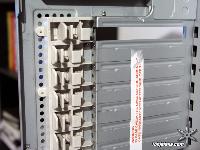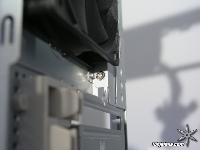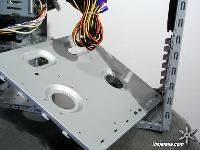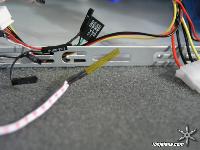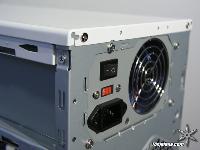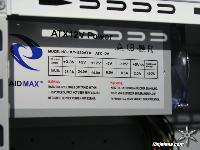After careful consideration I have decided to transfer all hardware review activities to a new domain. I purchased Hardwareasylum.com in 2012 and have been working hard to build a new and improved Ninjalane on that domain. If you are reading this you have reached one of the archived articles, news, projects and/or reviews that were left behind during the site migration.
Please update your bookmarks and be sure to visit the new and improved Ninjalane at Hardwareasylum.com
Raidmax X-1 Case Review
Author: Dennis Garcia
Published: Monday, July 25, 2005
Case Features - Weird stuff
Now on to some of the other "features" of the Raidmax X-1, the first is this tool less locking mechanism for expansion cards. I am not sure how else to phrase this I'll say it out right, "Remove this before you even remove the rubber bands from the power supply" This little item is very difficult to use and is prone to breakage, squeezing the tabs together will release the lock but also breaks the tab so it can never be used again. My suggestion, again, remove this item and use regular case screws like normal people.
Another strange feature is the ATX back plate and how it is secured in place. If you look in the photo you will see a screw tucked under the 120mm fan. This is one of two screws holding this item in place. (The other screw is located behind the fan, which will need to be removed to access. The silly part is that once removed a new back plate can be pressed into place and thus negating the need for the screws and fancy back plate to begin with.
On the good side the motherboard tray is removable, and the surprisingly accurate thermal sensor can be placed anywhere.
Typically to save on assembly costs most case mfgs will use pop rivets to secure panels and other structural members in place. However the Raidmax X-1 actually features screws on the major panels.
It is always nice when cases come with decent power supplies, the Raidmax X-1 comes with a Raidmax branded 2 fan PSU rated at a respectable 450 watts. The PSU supports typical 20pin motherboard installations and comes with a single SATA power connector. This rather disappointing when you consider how many modern motherboards are requiring the new 24pin PSUs.

